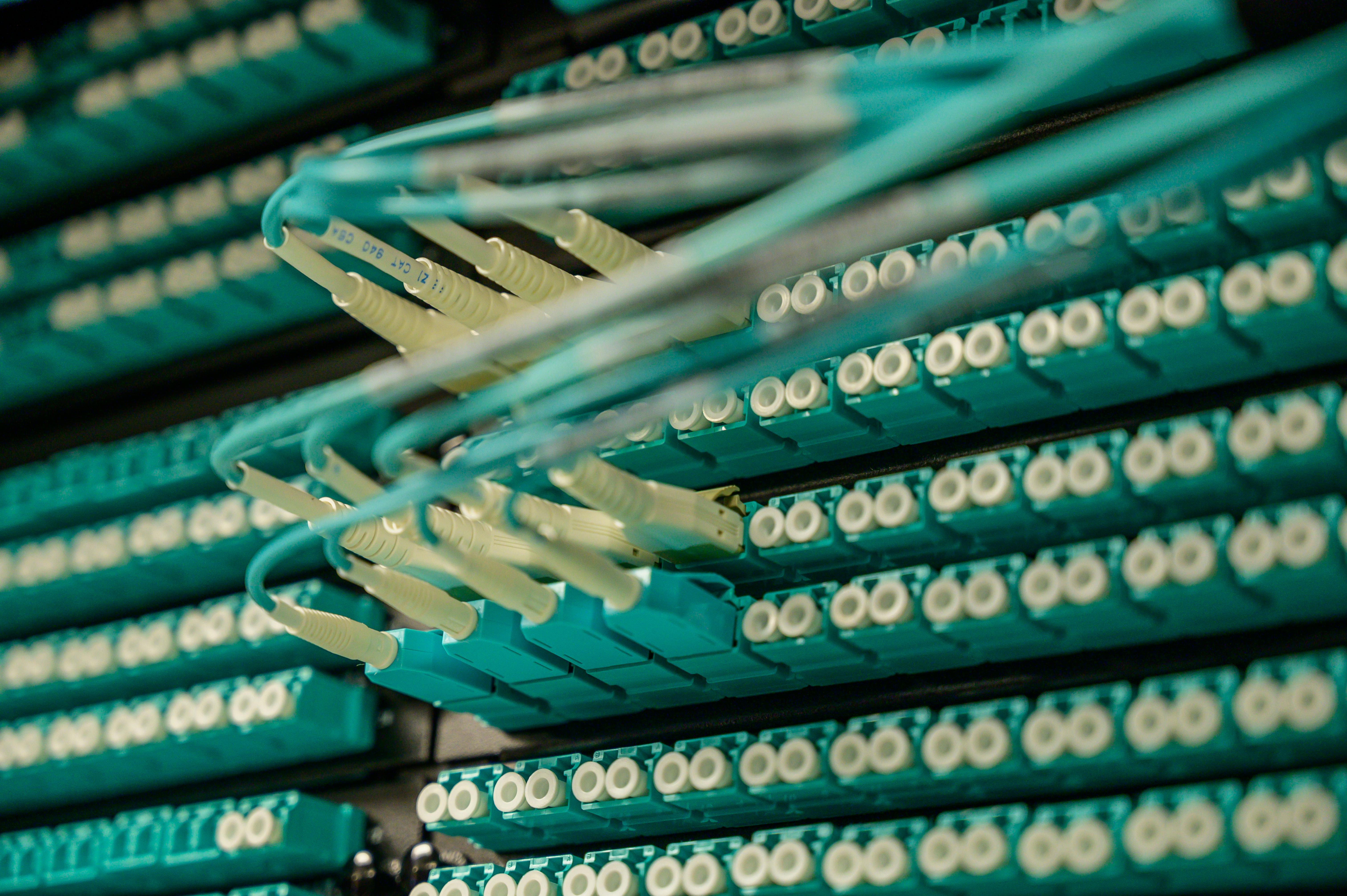Leased Line vs Broadband: Which Is Best for Business in 2025?
Whenever I speak to UK business owners and IT managers, the same question keeps coming up: “Do I really need a leased line, or is broadband enough for my business?” On the surface, the decision might appear to be simple: broadband looks cheaper and easier to set up. But what many don’t see at first is the hidden cost of slow uploads, unreliable connections, and unexpected downtime.
I’ve seen this play out across every type of business — from small offices running on FTTC to growing teams relying on the cloud for everything they do. And the truth is, the right answer depends on more than speed or price. It’s about how your business operates, how much downtime you can tolerate, and how you value long-term reliability.
In this article, I’ll break down the real differences between leased lines and broadband. I’ll take you through what they mean for your performance, your people, and your bottom line. In the end, you’ll be able to decide which one is the right fit for your business.
–
What This Blog Covers:
- The Hidden Connectivity Issues Costing SMBs Time and Money
- The Big Difference: Guaranteed Speed and Reliability
- The Cost Debate: Price vs Value
- How to Decide If a Leased Line Is Worth It
- When Broadband Is “Good Enough”
- Making the Right Connectivity Choice for Your Business
 The Hidden Connectivity Issues Costing SMBs Time and Money
The Hidden Connectivity Issues Costing SMBs Time and Money
There are three pain points and challenges that constantly come up when I speak to SMBs about their connectivity challenges: speed drops, reliability issues, and security concerns.
Let’s unpack what this looks like in practice:
- Speed drops and slow uploads: Staff get frustrated waiting for files to send, customers lose patience, and cloud-based apps either run at a glacier’s pace or stop working altogether.
- Reliability problems: You’d expect places like central London to have the best coverage, but this isn’t necessarily the case because the broadband infrastructure isn’t always up to scratch. Digging up roads for fibre installation is expensive and complicated, which means many businesses are still stuck with older FTTC or even ADSL lines.
- Falling behind in a cloud-first world: More and more of our business tools live in the cloud now, which is known to be significantly more secure. But if your broadband isn’t reliable enough, your team gets left behind, and the back door gets left open. And your customers (who also expect instant, digital-first service) notice it too.
Check out this article to help you gauge whether your broadband is enough for a cloud system.
If left unattended, these daily frustrations quickly begin to eat into productivity, damage customer experience, and ultimately hold your business back from growing.
The Big Difference: Guaranteed Speed and Reliability
The single most important difference between leased lines and broadband is that with a leased line, you get guaranteed speed and far more reliability.
With broadband, you’re on the public network. That means your business is sharing capacity with everyone else – staff devices, customer phones, and even your neighbours whose kids like to stream as soon as they get home from school. So at peak times like this, when everyone is on the net, your connection slows down.
On the other hand, a leased line is yours alone: no sharing or slowdowns. You get symmetrical upload and download speeds, which is vital if you’re sending large files or running multiple video calls at once. And if something does go wrong, your service is prioritised because leased lines come with stronger service level agreements (SLAs). So issues are resolved much faster, which means less downtime.
The Cost Debate: Price vs Value
This, of course, introduces the element of cost, which is usually a tough pill to swallow (so I’m going to ‘hold your hand’ while I say this). A leased line often costs five times more than broadband. I’ve had conversations where a customer is paying £50 a month for broadband, and I suggest a £250 leased line. Their reaction is usually: “I’m not paying that!”
And I completely understand. When you’re solely looking at the sticker price, it’s quite the jump. But once they’ve recovered, this is how I frame it: If that £200 difference is the only barrier, maybe reliable connectivity isn’t as important to you as you think. The real question is: what’s the cost of downtime? If your staff can’t work for even a single day, or if you lose customers because your systems are offline, the financial and reputational hit will far outweigh that monthly saving.
It’s the same argument we make when talking about AI or new technologies. Yes, there’s an upfront cost, but the efficiency and reliability gains save you far more in the long run.
Check out this article to take a closer look at why leased lines are pricier (and what you get in return).
How to Decide If a Leased Line Is Worth It
 Cost aside, the simplest way to decide whether it’s worth investing in a leased line is to think about the needs of your business.
Cost aside, the simplest way to decide whether it’s worth investing in a leased line is to think about the needs of your business.
- Look at your frustration points: If staff complain that “this is taking ages to upload” or “the internet’s gone down again,” that’s a red flag.
- Review your downtime: In the last six months, how many times has your broadband gone down? If it’s happened more than once, ask yourself what that lost time cost you.
- Think about the tools you depend on: Do you rely heavily on cloud systems, video calls, or customer-facing online services? If so, you may need to consider making the switch.
I’ve seen many businesses lose hours — sometimes days — waiting for public broadband outages to be fixed. With a leased line, issues are resolved faster, not because the provider “cares more,” but because you’ve paid for a premium product with better guarantees.
When Broadband Is “Good Enough”
I’m not here to try to sell you the most expensive product. So I’ll be the first to say that broadband is still absolutely the right choice for many businesses, and not every business needs a leased line. With Fibre to the Premises (FTTP) becoming more widespread, the performance gap has narrowed. For smaller businesses that don’t rely on time-critical systems or don’t predominantly deal with large files, FTTP broadband can be fit for purpose.
But the decision isn’t just about size. It’s about the nature of your business. For example, if you’re a small retail shop or a café offering Wi-Fi to customers, broadband may do the job perfectly well. But if you’re a doctor’s surgery, a financial services firm, or an emergency service provider, downtime isn’t an inconvenience; it’s a serious risk. In those cases, leased lines are the gold standard.
Making the Right Connectivity Choice for Your Business
 If you want the best of the best – and your business can’t afford to be offline – go for a leased line. It will always outperform broadband, and it remains the pinnacle of business connectivity. But if you’re cost-conscious and FTTP is available in your area, broadband can still be a strong, reliable option. You just need to have a thorough understanding of the risks of downtime and the nature of your operations.
If you want the best of the best – and your business can’t afford to be offline – go for a leased line. It will always outperform broadband, and it remains the pinnacle of business connectivity. But if you’re cost-conscious and FTTP is available in your area, broadband can still be a strong, reliable option. You just need to have a thorough understanding of the risks of downtime and the nature of your operations.
Again, the decision comes down to this: How much does downtime really cost your business? If the answer is “a lot,” then a leased line isn’t an expense — it’s an investment that will ultimately pay for itself.
I’ve spent years helping UK businesses choose the right connectivity for where they are now — and where they’re heading next. I know these decisions aren’t always simple, because keeping your business connected is about protecting your productivity, your people, and your peace of mind.
If you’re unsure which option is right for you, let’s talk. I’m always happy to help you assess your setup and figure out whether a leased line or broadband will deliver the performance your business deserves.

Will Cranmer
With two decades immersed in the dynamic world of telecoms, including 13 impactful years at Babble, Will brings a wealth of hands-on experience to the table. For 15 years, he has been on the front lines, directly shaping connectivity solutions for businesses just like yours.

Never miss an article again
Subscribe to our blog updates and get the latest articles delivered right into your inbox.
Subscribe by email
You May Also Like
These Related Stories
.jpg)
Is SoGEA Reliable Enough for Business?

FTTP vs SoGEA: What’s the Difference and Which Should You Choose?


